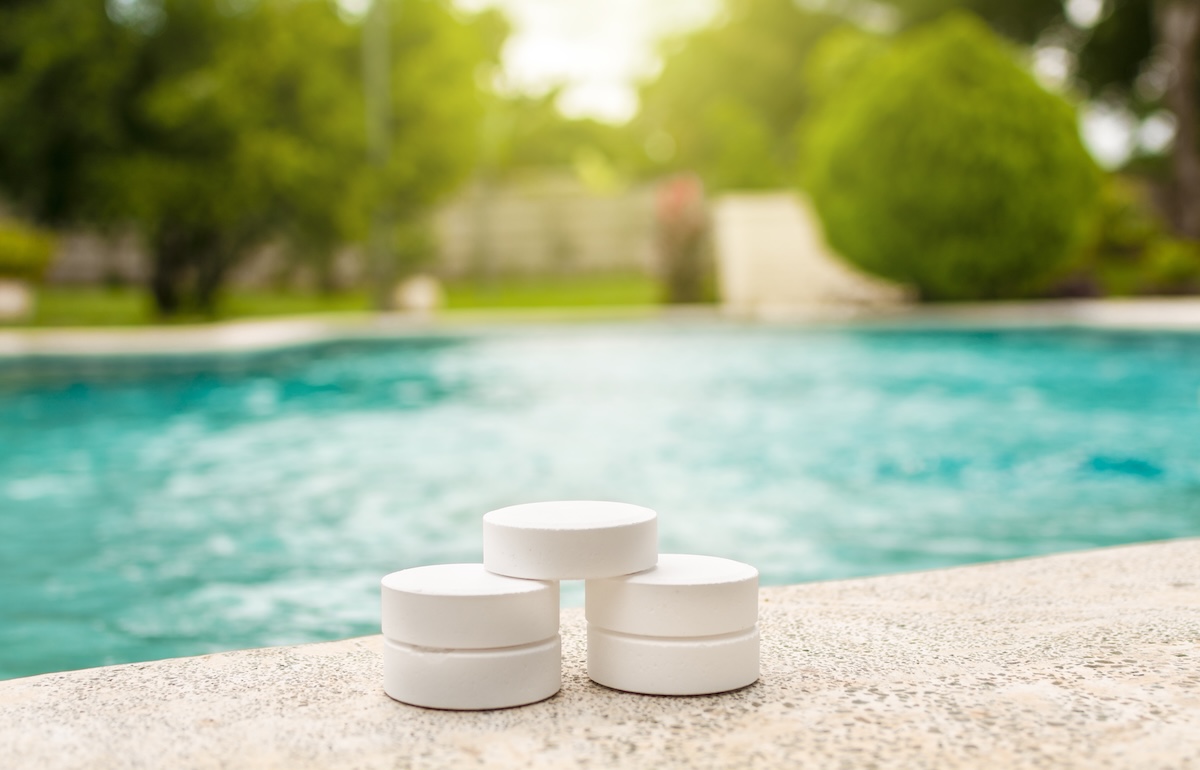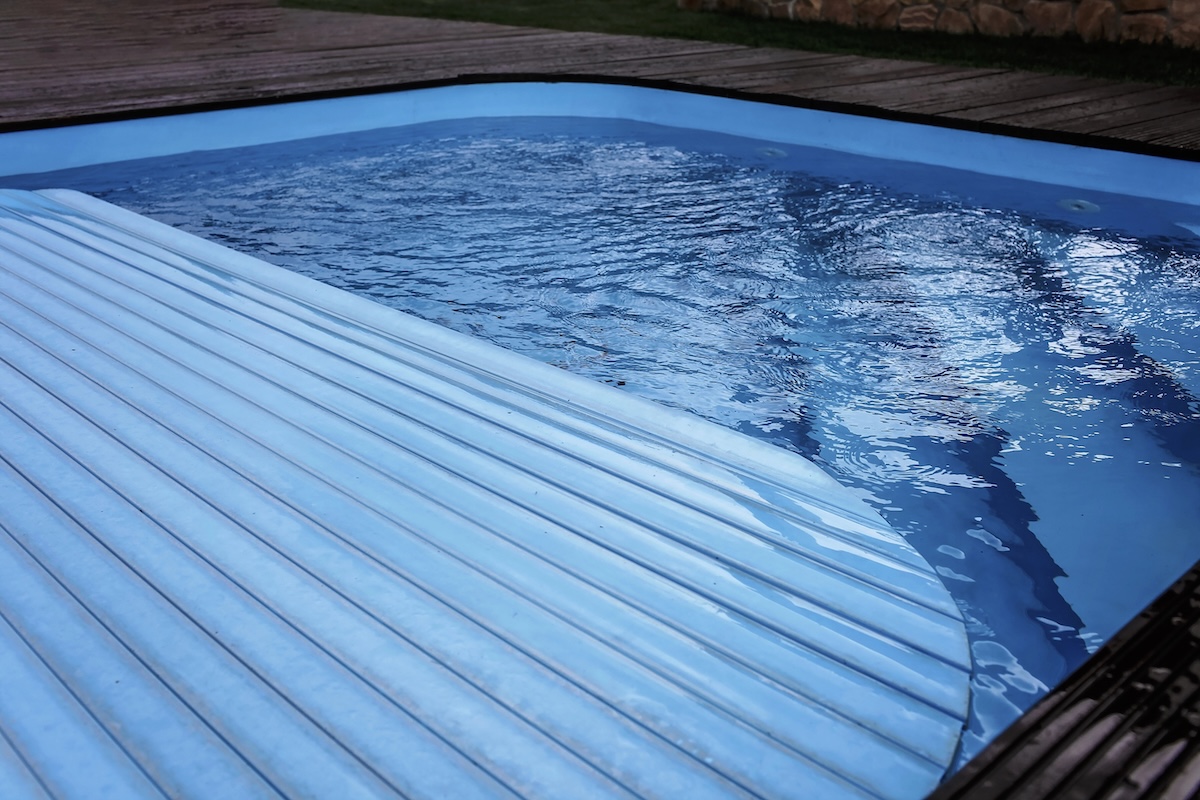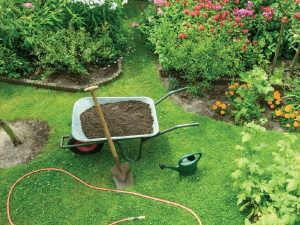We may earn revenue from the products available on this page and participate in affiliate programs. Learn More ›
Nothing says summer like a refreshing swim in the backyard pool. But your swimming pool does need care—and doses of the proper chemicals—to ensure safe, delightful dips. It’s important to address all the additives that make their way into the water every time someone submerges, not to mention the problems of plant life that blows in. The key is to establish a regular maintenance routine that limits the time you spend prepping the pool so you can spend more time enjoying it. Last one in is a rotten egg!
DON’T jump in the pool before giving it a thorough pre-season cleaning.
When uncovering your swimming pool after a season of non-use, be prepared to spend some extra time up front, clearing away any debris that may have built up over the winter. First, get the bigger branches and leaves out with a pool net. Next, run the pool filter to get things circulating again before you begin to chemically treat the water. A typical 1 HP pool pump moves about 3,000 gallons of water per hour, so be sure to run it long enough for one full cycle to take place. (And if you’re not sure how many gallons of water your swimming pool holds, multiply its number of cubic feet by 7.5.)
A robot pool cleaner can tackle much of this mess without a lot of hassle on your part; our tested guide to the best robot pool cleaners can guide you to a pick that’s right for your pool.
DO balance the levels to the letter.
Properly balancing your swimming pool’s levels is essential to keeping swimmers’ skin and eyes from getting irritated. Follow your pool test kit’s instructions to the letter each time you treat your water. Striking a proper balance of pH, overall alkalinity, and calcium also keeps metals from corroding and plaster from degrading over time, and prevents the formation of scale, which makes water cloudy, stains surfaces, and can even clog your filter if left unchecked.
DON’T neglect chlorine.

While there are chlorine alternatives on the market, none are as effective or inexpensive as the real thing when it comes to killing bacteria in pool water. The chemical works by destroying enzymes, structures, and processes of potentially nasty microorganisms. But you do have options when it comes to how you chlorinate. Do a little research to determine if chlorine pool tablets or liquid is a better option for your situation, and whether you’ll use an all-in- one solution that includes algaecide (or whether you’ll handle the green gunk separately).
DO shock your pool at least twice a month.
Most pool specialists recommend “shocking” a pool—essentially, applying three to five times the normal amount of chlorine to the water—at least twice a month, and many would prescribe weekly shocks for swimming pools that get a lot of use. Shock can be purchased online or at a swimming pool supply store in either granular or liquid form. For liquid, use 3.5 quarts for every 10,000 gallons of water; for granular, use 1 pound for every 10,000 gallons. Some shock products work so quickly, they render a pool usable again in as little as 15 minutes. For the products we recommend, see our researched guide to the best pool shocks.
Pool pro tip: Even if you use bromine instead of chlorine on a day-to-day basis, you’ll still need to shock the water with chlorine. For best results, wait until the sun goes down so that UV rays won’t interfere with the process.
DON’T forget the algaecide.
Microscopic plant life can make its way into your pool and quickly bloom to the point of making swimmers avoid the water entirely. The goal in using a pool algaecide is to kill all existing algae and prevent anything from returning. It’s particularly useful in windy and rainy climates, since these conditions foster algae growth by sweeping those pesky spores straight into your pool. Generally speaking, a weekly or biweekly quality pool algaecide treatment should keep those blooms at bay.
DO your best to keep outside water out of the pool.

To keep a pool sparkling clean, steer clear of common missteps that would undo your careful efforts at maintenance. Direct the garden hose away from the pool when rinsing away poolside dirt—otherwise, you’re just creating more work for yourself (and the pool filter). And since rainwater welcomes algae infestation, it’s a good idea to cover the pool when you’re in for a spate of storms.
DON’T reuse empty pool chemical containers.
Here’s a rule of thumb every pool owner should live by: Always add chemicals to water, and never add water to chemicals. It’s a dictate of chemistry 101 that keeps you from accidentally causing an explosion when attempting to rinse out your old pool chemical containers. Be sure to dispose of them properly instead of putting your safety at risk.
All in all, it does take a bit of work to keep a pool in shape, but it’s well worth it, whether you’re up for a game of Marco Polo or just want to lie on a float!


